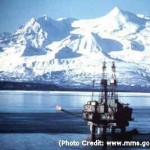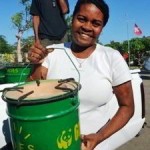San Francisco, California – In a report released Monday, the Center for Biological Diversity and Care for the Wild International document the situations of 17 Arctic animals trying to survive the effects of climate change and ocean acidification.

“The polar bear is the best-known victim of rapid melting in the Arctic, but if we don’t slash greenhouse pollution, many more creatures will follow it down the path to extinction,” said Shaye Wolf, the Center’s Climate Science Director and lead author of the report, “Extinction: It’s Not Just for Polar Bears”.
Most of the 17 imperiled species are mammals – the Arctic fox, polar bear, caribou or reindeer, musk-ox, and Pacific walrus, as well as four whales – gray, beluga, bowhead and narwhal. Four ice seals are also at risk – the ringed, bearded, harp and ribbon seals. The report names three sea-birds in jeopardy – the Kittlitz’s murrelet, spectacled eider and ivory gull; and also finds the sea butterfly, a species of plankton, to be at risk of extinction.
The minimum extent of Arctic sea is smaller than ever, satellite data shows. Arctic sea ice generally reaches its annual minimum extent in mid-September. On September 3, ice extent dropped below the seasonal minimum for 2009 to become the third lowest in the satellite record, according to the National Snow and Ice Data Center at the University of Colorado, Boulder. This August, ice extent for the month was the second lowest in the satellite record, after 2007.
According to NASA scientists in the Cryospheric Sciences Branch, a satellite-based data record starting in late 1978 shows that indeed rapid changes have been occurring in the Arctic, where the perennial ice cover has been declining at the rate of about 13 percent per decade and the ice cover as a whole has been declining at the lesser rate of about five percent per decade.

This year, the Northwest Passage and the Northern Sea Route are largely free of ice, allowing the potential for a first circumnavigation of the Arctic Ocean now being attempted by two expeditions – one from Norway and one from Russia.
The conservation groups say this rapid disappearance and thinning of the sea ice is having devastating effects on the many species that depend on it for rearing young, hunting, resting and avoiding predators.
Arctic whales are at risk from increasing offshore oil drilling and shipping activity as areas become ice-free, which heightens threats from oil spills, ship strikes and noise.
Some Arctic species have already experienced wide-spread die-offs and population declines after losing key habitats and food sources, the groups report. Others face extreme weather events or suffer new pressure from predators and pathogens moving northward.

Sea ice loss is forcing Pacific walrus mothers and calves to come to shore, where young can be trampled to death in stampedes.
Researchers from the U.S. Geological Survey’s Alaska Science Center, who have been tracking walrus movements using satellite radio tags, report that up to 20,000 walruses are now gathering in herds on the Alaskan side of the Chukchi Sea.
“For the third time in the last four years, thousands of Pacific walruses are hauling out onto the northwest shores of Alaska to rest in the absence of sea ice over the continental shelf of the Chukchi Sea,” the USGS research team said August 30.
In February 2008, the Center for Biological Diversity filed a formal scientific petition with the U.S. Fish and Wildlife Service requesting protection of the Pacific walrus under the Endangered Species Act. Under a lawsuit settlement, the Service must make a decision as to whether the species should be protected by January 31, 2011.
Early sea-ice break-up prematurely separates ringed and harp seal mothers from their pups before the pups are big enough to survive, the conservation groups report.












